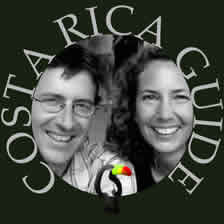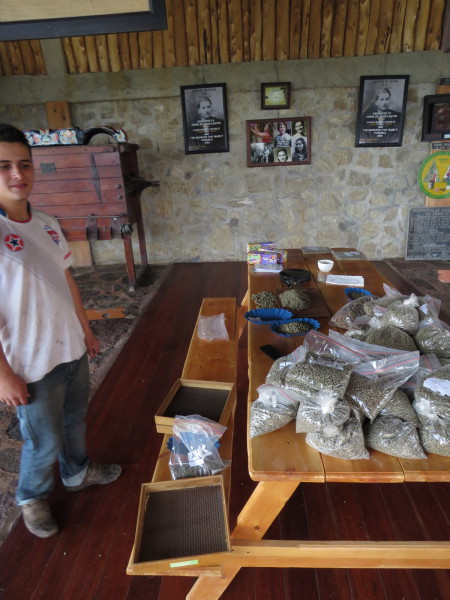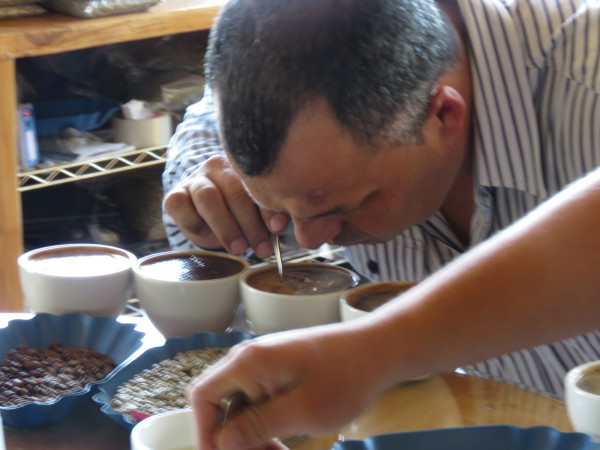Coffee tours are a fun way to learn about the process and history of coffee in Costa Rica.
Río Jorcó Estate coffee from the Tarrazu region is highly desired by specialty gourmet roasters from all over the world. Our friend Jim Alfaro recently invited us to spend a few days in the guest villa and observe while two European coffee buyers toured the growing and processing operation and a film crew recorded it for a documentary. The visit culminated in a tasting called “cupping” where the buyers assigned quality and flavor scores to several small batches of coffee from Río Jorcó and three other local artisan farms.
At the end the buyers made some large purchases at high prices validating the theory that small batch coffee could command more money if processed separately rather than mixed as was traditionally done.
Cupping was described to us as “coffee tasting” but that’s a huge over simplification of a delightfully complex and ritualistic process. It involves science and precise measurement as well as a lot of tradition and idiosyncrasy. The cupping took place in the tasting area of the private coffee museum on the estate.
100 gr samples from the 50 kilo bags stored in the warehouse in the previous step (see photos of coffee processing in Costa Rica) are roasted (always medium roast), ground (always medium grind) and presented for blind testing. The aroma (and for some tasters the flavor) of the green, roasted, and ground beans is scored first. Then water precisely six degrees below boiling is added and the brewing characteristics are scored.
The froth full of grounds that rises to the top of the cup is “broken” releasing the first whiff of the liquid coffee’s aroma and finally the coffee is tasted.
The whole process is monitored with a stopwatch and thermometers to ensure consistency and at the end scores are tabulated and announced. Sue was invited to participate alongside the buyers and comported herself admirably. She not only correctly identified the highest scoring coffee as her favorite but did so based on the same characteristics the experts found desirable in that bean.
Below are a few of our photos showing the final part of the coffee process – cupping or tasting. Each of the photos links to a detailed description if you’d like to learn more.
See also the photo albums for growing and picking the coffee and the processing from red cherries to green beans.






























